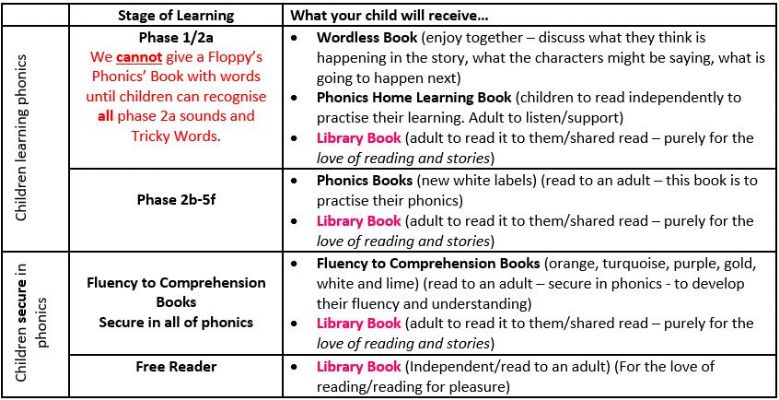Phonics and Early Reading
Lowedges Junior Academy use the ACET phonics scheme to teach phonics across school. This is a systematic approach to the teaching of synthetic phonics and is a highly successful way of developing children’s reading, spelling and language skills.
How is Phonics taught?
Phonics is taught through daily phonics lessons that are fast paced and repetitive so children make lots of progress, quickly. The phonics groups are streamed, which means children are in a group that matches their ability based on assessments. The groups are taught by a variety of phonics experts and are of varying sizes. All phonics lessons are structured the same, meaning all children receive the same high-quality learning experiences.
When do pupils learn Phonics?
Phonics starts in Nursery. The focus isn’t on reading words just yet but on learning all the vitally important skills to help to move onto reading words. Listening skills are developed and pupils will practice making sounds with their bodies and their mouths. They also develop their Fine Motor Skills, ready for holding a pencil.
In Reception, from the very first day, all pupils start Phase 2 phonics (this means learning the letter sounds and beginning to put them together to read and spell words). The progression of Phonics throughout Reception and Year 1 follows the structure below, with each phase covering a variety of sounds, tricky words an high frequency words.

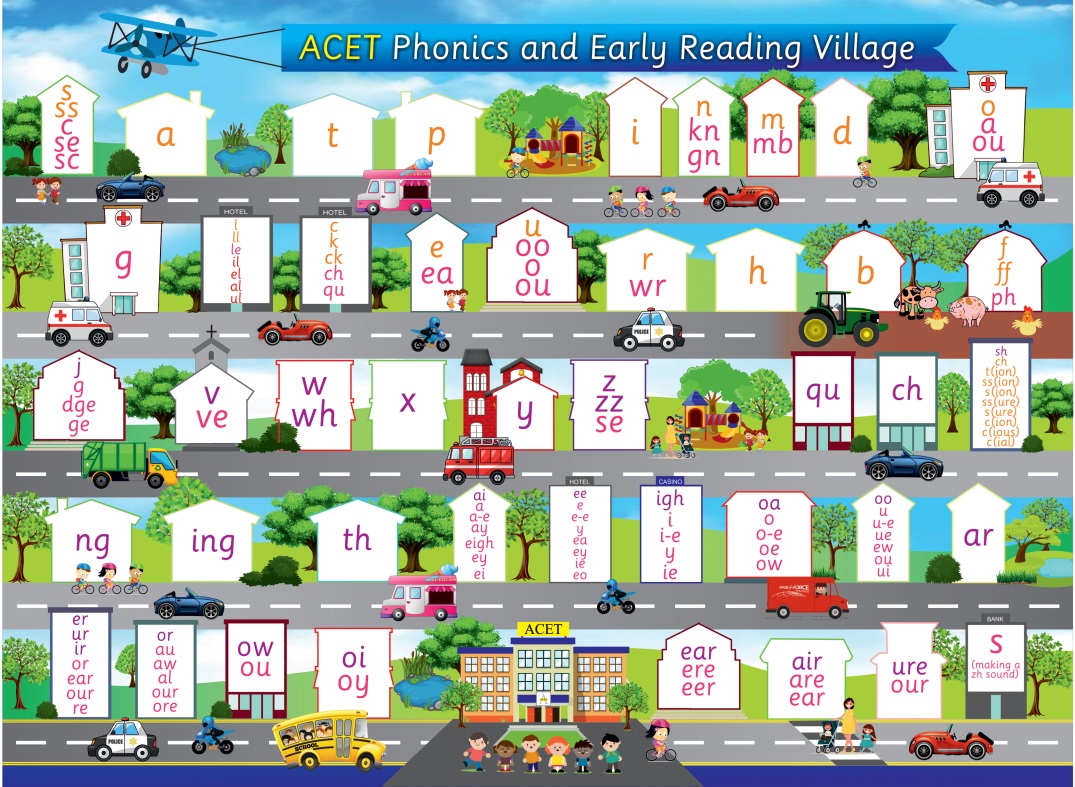
In Year 2, pupils progress onto spelling rules, where they learn spelling rules/patterns, tenses and other grammatical terms such as homophones and suffixes. Reading larger texts is a focus along with ensuring that pupils know which sound to use when spelling.
Any pupil who are not meeting the required expectations for their year group are swiftly identified through a rigorous assessment process and interventions are put in place to ensure pupils catch-up quickly.
Home Reading
Pupils accessing phonics lessons or phonics interventions will reinforce their reading at home through fully decodable phonics books, in line with what they are learning and accessing in their phonics sessions. This gives the pupils the opportunity to practice what they have been learning in school.
Lowedges Junior Academy’s main focus is to improve reading by developing the children’s fluency (reading accurately without lots of sounding out), therefore pupils will only have their book changed once per week. This will allow them to become fluent and confident in what they are reading.
If a pupil is reading a phonics books, then please be aware that they should be able to read 100% of the book using the phonics they have been taught. This may appear as ‘easy’ but this is to aid fluency and give them the chance to practice what they have been learning. When hearing your child read at home, check the inside cover for any words they need to be taught before they begin.
The table below shows the different books pupils will take home:
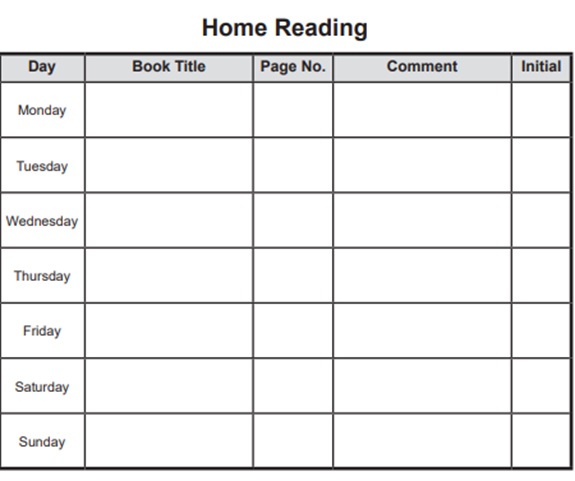
When pupils are heard reading in school, staff will sign their planners to show that they have read. We ask that parents/carers also sign planners when hearing their children read at home (this includes all children - Phonics Home Learning Books, Phonics Books, Coloured Book Band Readers, Free Readers) in order that pupils’ planners are used as a two-way communication between home and school. Regular home reading has a positive impact on children’s learning across the whole curriculum.
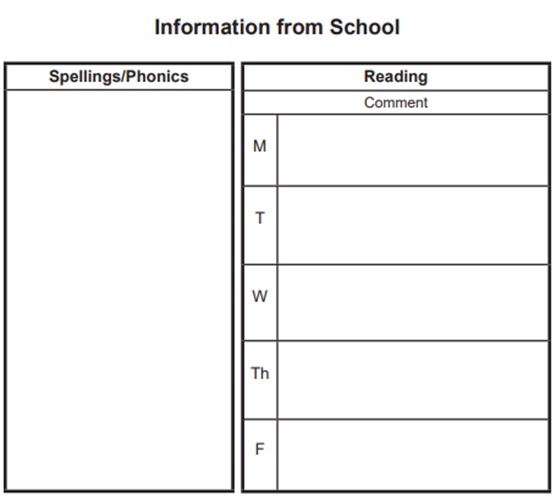
Things to know
- Sounds are taught in a very specific order. (The books match this order).
- Phonics is used as the main way to read a word. E.G. When stuck, the strategy to use is sound it out (e.g. sh – o – p), look for the sounds (e.g. noticing the ‘th’ in bath) split it up (e.g. f – ar – m = farm, y – ar – d = yard, farmyard).
- Pictures are NEVER used to help read a word.
- Some words are tricky words (see the list below) and these must be read by sight, with no sounding out.
- Always check the inside cover of the book as sometimes there are topic words that the children need teaching first before they read the book.
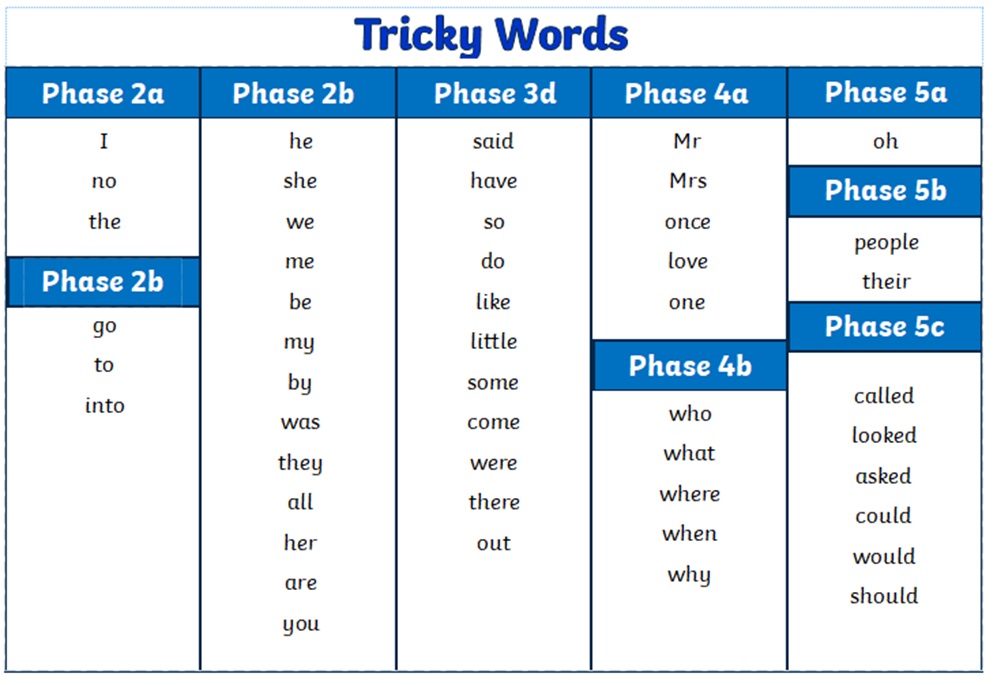
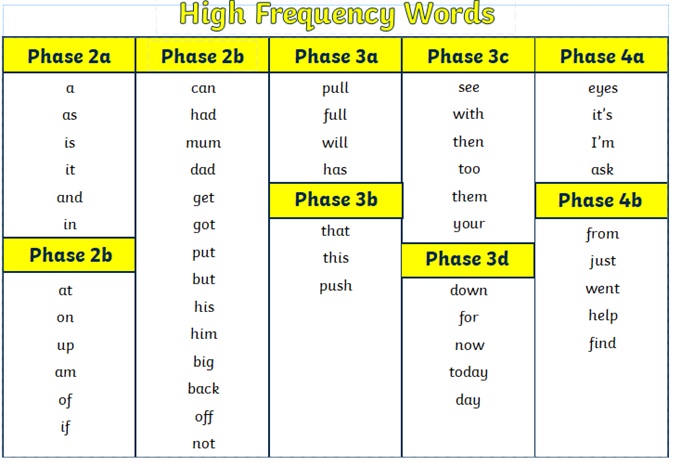
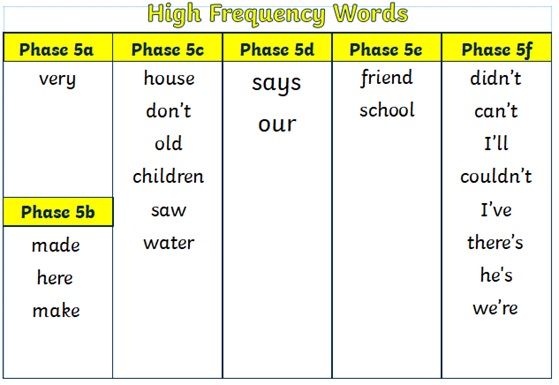
Want to learn more?
Lowedges Junior Academy appreciates that phonics is fairly complicated and certainly not how many people were taught to read at school in the past therefore to help make parents/carers feel as comfortable as possible, throughout each academic year there will be various sessions that you can attend or videos that you can watch in order to learn more about the vocabulary, the strategies and the ways you can support your child at home.
Lowedges Junior Academy is always willing to help, so please come and see us if you have any questions.
Phase 2 to 5 Phonics Parent Support Videos
Each of the videos outline information about Phonics and how it is taught in the academy for parents. Please ask your child's class teacher for the Phase of phonics that your child is currently learning.
Phase 2: https://www.loom.com/share/014062c0fa554e60bdc56e50605527b7?sharedAppSource=personal_library
Phase 3: https://www.loom.com/share/4f6f3b013639402b8fe3b4f8b6dcd2be?sharedAppSource=personal_library
Phase 4: https://www.loom.com/share/1bab97e264584e9190b4382b74c08114?sharedAppSource=personal_library
Phase 5: https://www.loom.com/share/01179ecd43d04c04866861a2a80f9619?sharedAppSource=personal_library
